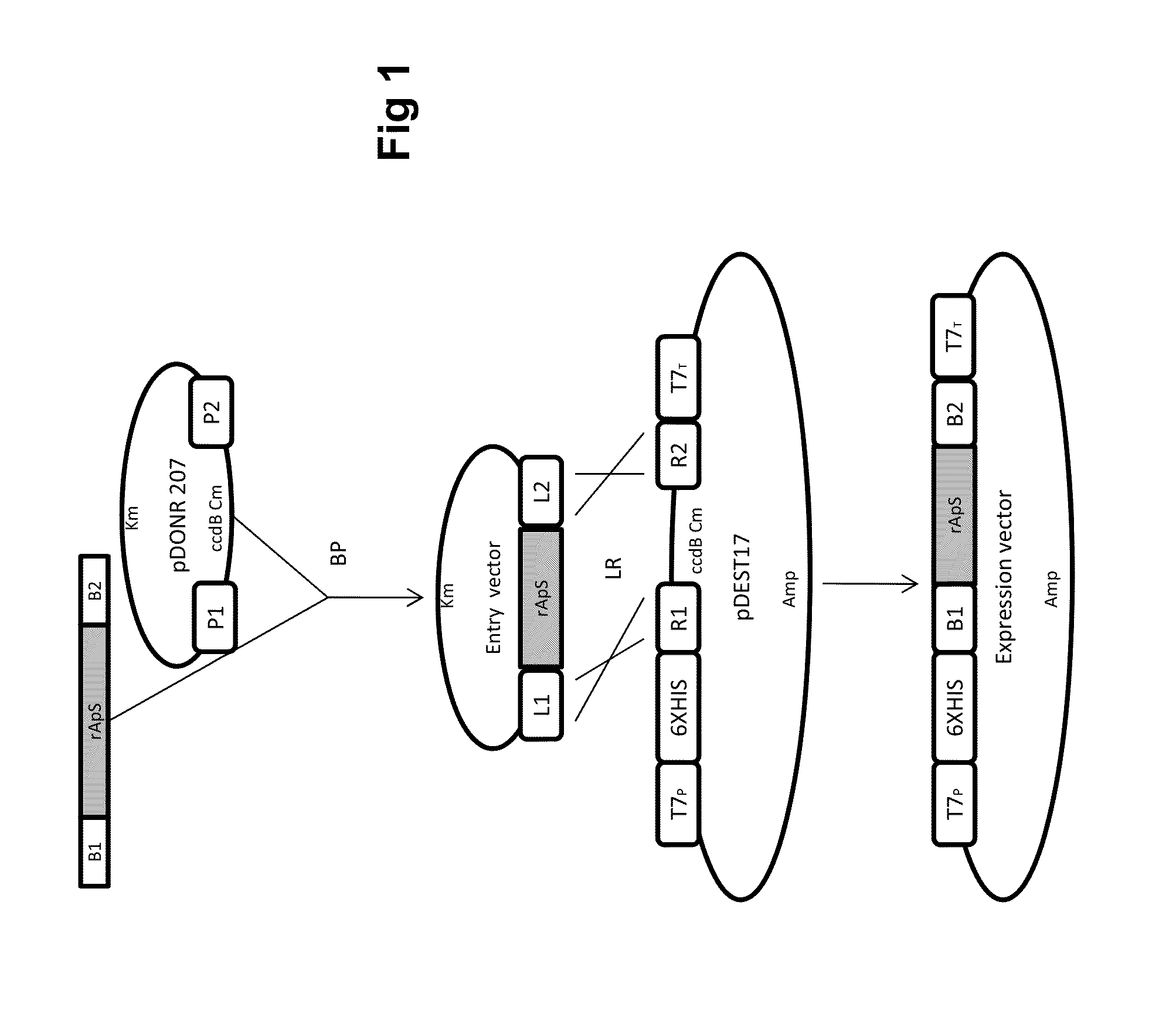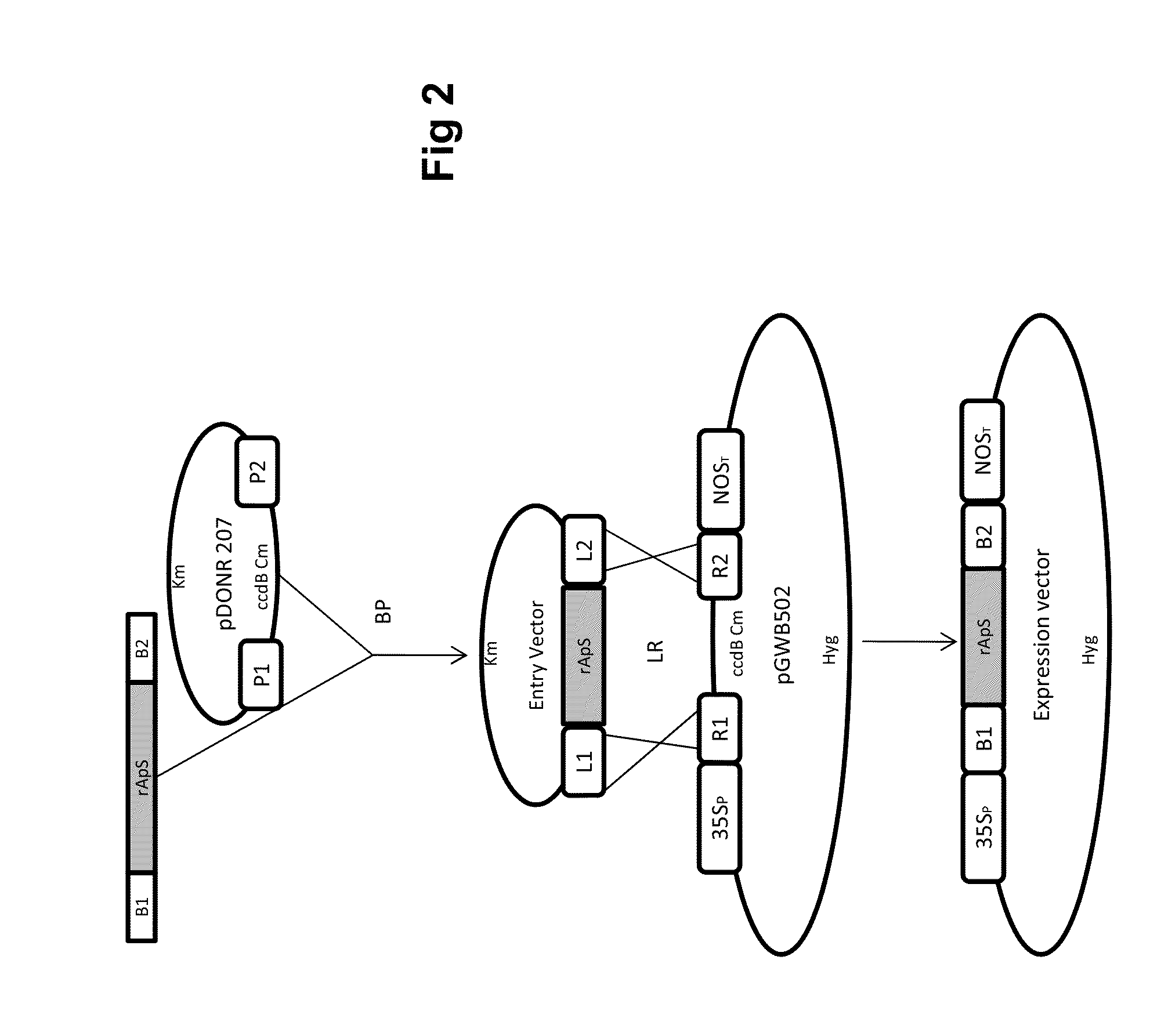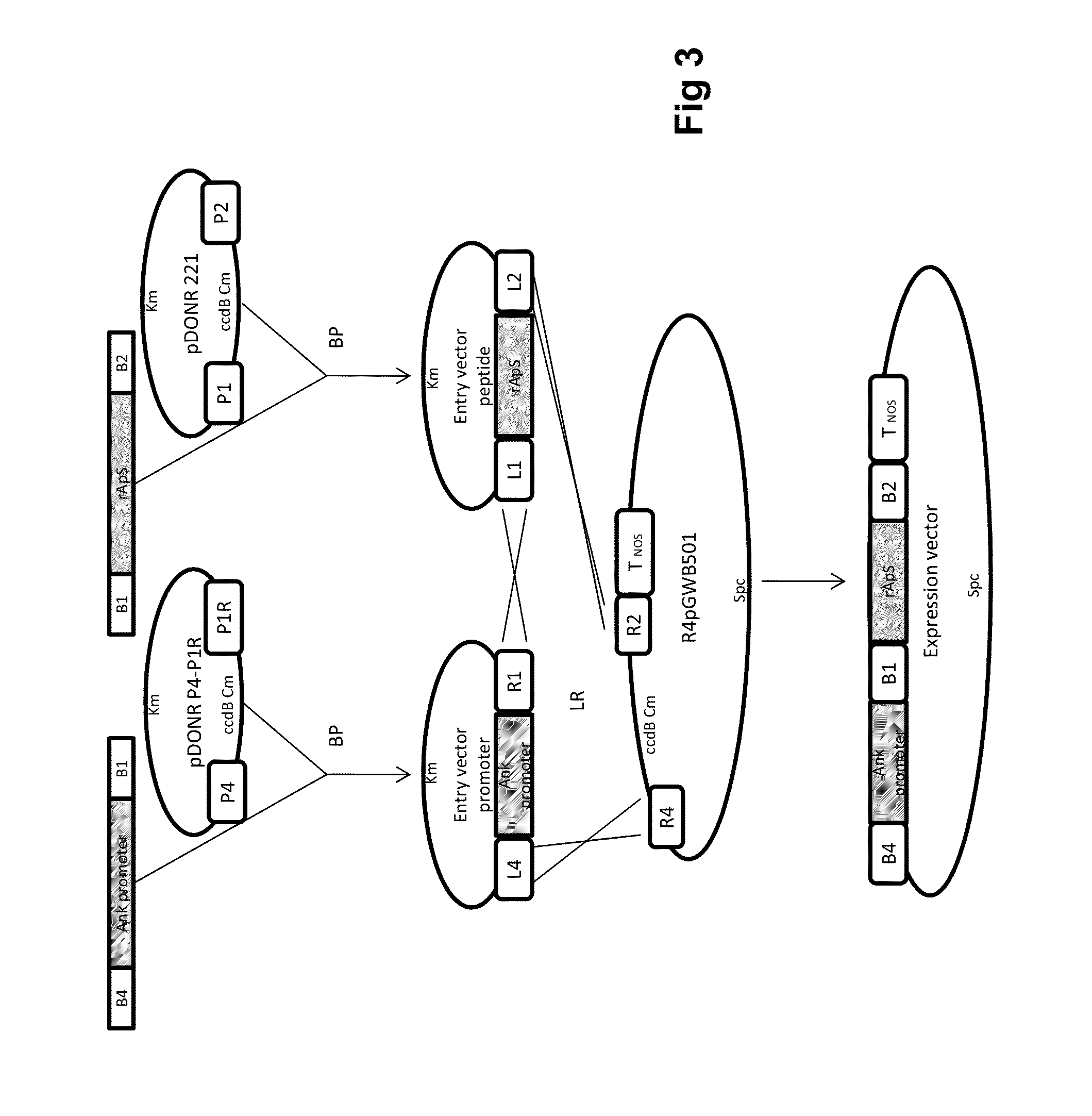Chimeric gene for heterologous expression that encodes peptides with antimicrobial activity
a technology of chimeric nucleotide sequence and antimicrobial activity, which is applied in the direction of angiosperm/flowering plant, plant cells, sugar derivatives, etc., can solve the problems of low recovery obtained after extraction from the tissue of origin, and difficulties in using peptides as alternative drugs
- Summary
- Abstract
- Description
- Claims
- Application Information
AI Technical Summary
Benefits of technology
Problems solved by technology
Method used
Image
Examples
example 1
[0018]Design of the Synthetic Gene: The Ap-S cDNA was designed using the reverse-translation of the sequence of 31 amino acids (MPVGIVIAPKKSPFTAKKPGPVLSGVKAGPG) (SEQ ID N° 9) previously described based on Argopecten purpuratus hemocytes. Using GCUA software (Fuhrmann y cols., 2004) and codons from E. coli, a synthetic gene for rApS (SEQ ID N° 1) was obtained. A recognition site for the TEV-protease in the 5 ′end was added. The full oligonucleotide sequence (TEV / rApS) was synthesized at Integrated DNA Technologies, Inc. (Iowa, U.S.A.) and cloned into a pSMART vector (Lucigen, Middletown, Wis.), generating the vector pSMARTTEVrApS.
example 2
[0019]Generation of the Donor-gene Vector for Expression in E. coli: Using pSMART-TEV / rApS as a template, additional attB recombination sequences were flanked at the TEV / rApS ends using a double PCR amplification strategy. In the first step (pre-amplification), adapter-primers adpF (SEQ ID N° 2) and adpR (SEQ ID N° 3) were used to amplify a fragment of 147 bp. The PCR reaction was performed in a total volume of 50 μL containing 5 μL of Accuprime Pfx reaction mix 10× (Invitrogen, Carlsbad, Calif.), 1 μL of each primer (10 mM), 0.5 μL of AccuPrime Pfx DNA polymerase (2.5 U / μL; Invitrogen), 0.5 μL of pSMART-TEV / rApS (1:100 diluted) and 42 μL of H2O. The thermal profile was a starting denaturation step at 95° C. for 2 min, followed by 10 cycles of 94° C. for 15 s, 55° C. for 30 s and 68° C. for 135 s. A second round of PCR was performed on 10μL of the pre-amplified product using the primers attB1 (SEQ ID N° 4) and attB2 (SEQ ID N° 5), resulting in the synthesis of a 181 by fragment (SEQ...
example 3
[0021]Expression and Purification of AMP in E. coli BL21 (DE3): A clone of E. coli positive for expression vector pDEST17-pre-TEV / rApS, as verified by sequencing (Macrogen Inc., Korea), was used in induction experiments of the designed recombinant peptide. An aliquot of 5 mL of the selected clone of E. coli BL21 (DE3) was prepared by incubation in LB medium supplemented with carbenicillin, 50 mg / L. The clone was cultivated overnight at 26° C. under agitation at 180 rpm. Then, four aliquots of 1 mL each were incubated in 250 mL flasks containing the same culture medium and grown for an additional 9 h. Once the cultures reached OD600=1.8, isopropyl-b-d-thio-galactopyranoside (IPTG) was added to a concentration of 1 mM for peptide induction during an additional 3 h at four different temperatures (25° C., 26° C., 28° C., and 37° C.) and 180 rpm. The bacterial cultures were centrifuged at 12,000×g, and the supernatants were removed. The pellets were processed for peptide purification thr...
PUM
| Property | Measurement | Unit |
|---|---|---|
| Electrical resistance | aaaaa | aaaaa |
| Antimicrobial properties | aaaaa | aaaaa |
Abstract
Description
Claims
Application Information
 Login to View More
Login to View More - R&D
- Intellectual Property
- Life Sciences
- Materials
- Tech Scout
- Unparalleled Data Quality
- Higher Quality Content
- 60% Fewer Hallucinations
Browse by: Latest US Patents, China's latest patents, Technical Efficacy Thesaurus, Application Domain, Technology Topic, Popular Technical Reports.
© 2025 PatSnap. All rights reserved.Legal|Privacy policy|Modern Slavery Act Transparency Statement|Sitemap|About US| Contact US: help@patsnap.com



